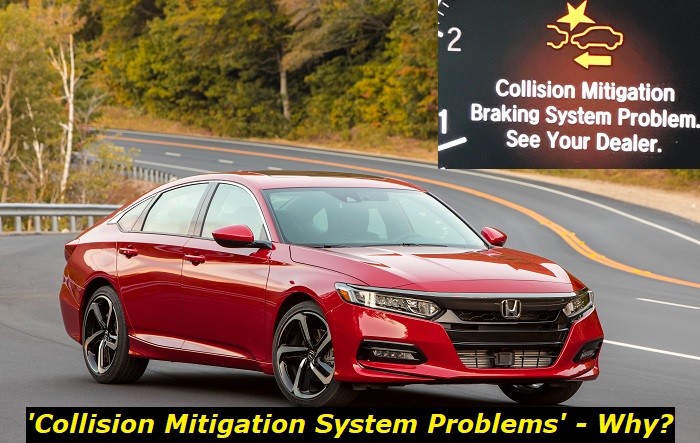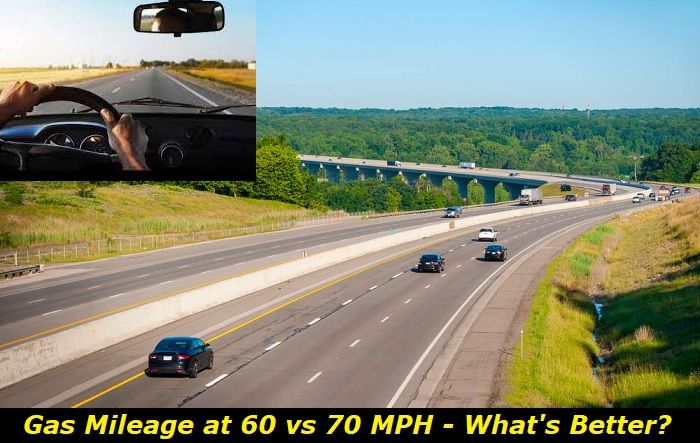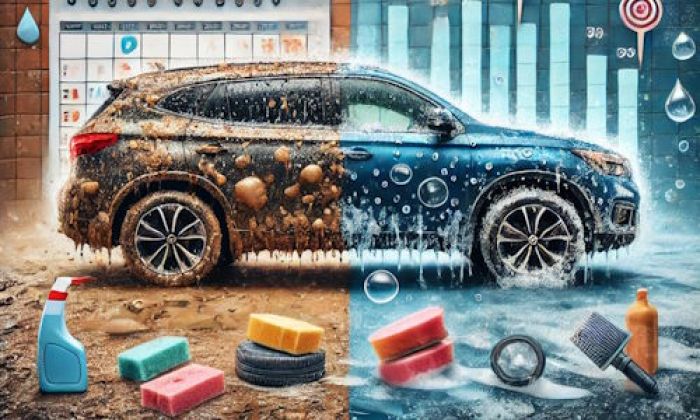As vehicles become increasingly advanced, so do the technology systems that keep us safe on the road. One such system is the Collision Mitigation System (CMS), which uses sensors and cameras to detect potential collisions and alert the driver to take action. But these systems are not without their problems.
Collision mitigation system problem message highlights
- Common reasons:radar sensor or camera blocked, software glitch
- How to fix:clean radar and sensor areas, disconnect the battery for some time
- Possible consequences:smart functions won't be working
- Priority level:Low
- Can you drive?Carefully
- DIY repair:Possible
- Repair price range:$0-$450

What Collision Mitigation System Is
Collision Mitigation Systems (CMS) are advanced safety features found in many modern vehicles that are designed to help prevent or reduce the severity of a collision. These systems use a combination of sensors, cameras, and radar to detect potential hazards on the road, and then alert the driver or even take action to avoid the collision.
One of the most common types of CMS is the Forward Collision Warning (FCW) system. This system uses radar or cameras to detect vehicles or other objects in the road ahead, and then sends an alert to the driver if a potential collision is detected.
Another type of CMS is the Automatic Emergency Braking (AEB) system. This system goes one step further than the FCW system, by not only warning the driver of a potential collision but also automatically applying the brakes if the driver does not respond to the warning.
Some systems combine multiple types of CMS, such as Adaptive Cruise Control with Stop-and-Go (ACC), which uses radar and cameras to detect vehicles ahead and automatically adjust the vehicle's speed to maintain a safe distance.
Like any other vehicle component, the CMS can malfunction and cause problems. In the sections below, we'll look at some common symptoms of a CMS problem and ways to fix it.
Symptoms of Collision Mitigation System Malfunction
Understanding the common symptoms of a CMS problem can help you identify when something is not working correctly, and take the necessary steps to have it fixed.
1) Warning light on
One of the most common symptoms of a CMS problem is a warning light on the dashboard. This light will typically be labeled as "Collision Mitigation" or "Adaptive Cruise Control" and will turn on when there is an issue with the system.
2) Faulty radar sensor
Another symptom of a CMS problem is a malfunctioning radar sensor. This sensor detects other vehicles and obstacles on the road, and if it's not working properly, the CMS may not be able to function correctly. If you notice that your CMS is not detecting other vehicles or obstacles as it should, it could be an issue with the radar sensor.
3) False alarm
A CMS that frequently triggers false alarms is often an indication of a problem. This could include the system activating when no collision is imminent or providing warnings when there is no danger.
4) Malfunctioning camera
The camera monitors the road ahead and detects potential hazards. If it is not working correctly, the CMS may not be able to detect and react to potential hazards in time, increasing the risk of an accident.
5) Malfunctioning brake system
If the brake system is not working correctly, the CMS may not be able to bring the vehicle to a stop in time, and this can be dangerous.
6) Decreased fuel efficiency
The CMS helps you maintain a safe distance from other vehicles to avoid unnecessary braking and accelerating. If the system is not working correctly, it can cause increased fuel consumption.
Common Collision Mitigation System Problems
Here are some common problems that drivers may experience with collision mitigation systems:
- Sudden braking:One of the most common complaints about collision mitigation systems is that they can unexpectedly apply the brakes, causing the vehicle to come to a sudden stop. This can be alarming and potentially dangerous, especially when driving at high speeds or in heavy traffic.
- Sudden deceleration: In addition to sudden braking, collision mitigation systems can also cause sudden deceleration, which can be jarring and uncomfortable for passengers. This can be especially problematic for drivers who are not expecting it and may cause them to lose control of the vehicle.
- Jerking: Some collision mitigation systems can cause the vehicle to jerk or lurch when they are activated.
- Shuddering: Some collision mitigation systems can cause the vehicle to shudder or vibrate when they are activated.
- Sending loud alerts: Another common issue with collision mitigation systems is that they can send loud and distracting alerts, which can be alarming and disruptive. This can be especially problematic for drivers who are already on edge or in a stressful situation.
- Falsely seeing opposing traffic as an obstacle:Some collision mitigation systems can have trouble distinguishing between opposing traffic and obstacles, leading to false warnings and unnecessary braking.
You should be aware of these common problems and take steps to address them, such as adjusting the sensitivity of the system or disabling certain features.
How to Fix Collision Mitigation System Problems
The first step in fixing common problems with collision mitigation systems is to check your vehicle's manual. Many manufacturers provide detailed instructions on how to troubleshoot and fix common issues with their CMS systems. This can include information on how to reset the system, check for software updates, and more.
Next, check for any visible damage to the CMS sensors or cameras. These systems rely on sensors and cameras to detect obstacles and hazards on the road, so any damage to these components can cause the system to malfunction. If you notice any damage, have it repaired or replaced as soon as possible.
Another common problem with collision mitigation systems is software issues. These systems rely on software to function properly, so any bugs or glitches in the software can cause the system to malfunction. If you notice any strange behavior from your CMS, check for any software updates that may be available. Many manufacturers release software updates to fix bugs and improve system performance.
If you're still experiencing problems with your collision mitigation system after trying the above steps, it's best to take your vehicle to a certified mechanic or dealer.
Resetting Collision Mitigation Systems
If your collision mitigation system is not working correctly, it is important to identify the cause of the problem before attempting to reset the system. Only after then should you begin the process of resetting your collision mitigation system.
Resetting your collision mitigation system is a relatively simple process. The first step is to check your vehicle's owner's manual for specific instructions. In most cases, you'll need to locate the system's control module and perform a reset. You can do this by disconnecting the battery or using a special reset button. If you're confused about how to reset your system even with the vehicle's manual, contact a professional mechanic.
Having the collision mitigation system inspected and serviced by a professional is another important step in the resetting process. Even if you're able to reset the system, it may still be malfunctioning. A professional mechanic can diagnose the issue and make any necessary repairs to ensure your system is working correctly.
Are Collision Mitigation Systems Reliable?
The short answer is yes and no. While collision-avoidance systems can certainly be helpful, they are not perfect and you should not rely on them 100%. For example, some systems may not work as well in certain weather conditions, such as heavy rain or snow. Others may have difficulty detecting certain types of hazards like pedestrians or bicycles.
Collision-avoidance systems are just one tool that can be used to help prevent collisions. They are not a substitute for good driving habits and paying attention to the road. Always be aware of your surroundings and be prepared to take action if you see a potential hazard.
Conclusion
While the collision mitigation system is a crucial safety feature in modern vehicles that helps prevent accidents, it is not immune to malfunction. Understanding the common symptoms and knowing the ways to fix the problem can help you identify when there is an issue with your system. Regular maintenance and inspection of your collision mitigation system can also prevent potential problems.
Remember to always consult your vehicle's manual or a professional mechanic for proper diagnosis and repair. With the right attention and care, your vehicle's collision mitigation system can continue to provide the peace of mind and protection it is designed to offer.
About the authors
The CarAraC research team is composed of seasoned auto mechanics and automotive industry professionals, including individuals with advanced degrees and certifications in their field. Our team members boast prestigious credentials, reflecting their extensive knowledge and skills. These qualifications include: IMI: Institute of the Motor Industry, ASE-Certified Master Automobile Technicians; Coventry University, Graduate of MA in Automotive Journalism; Politecnico di Torino, Italy, MS Automotive Engineering; Ss. Cyril and Methodius University in Skopje, Mechanical University in Skopje; TOC Automotive College; DHA Suffa University, Department of Mechanical Engineering






Add comment